Miles of lava flows, cinder cones, and sagebrush create a vast landscape that at first glance makes many think this is a desolate area, but nothing could be further from the truth. While not at all resembling the moon’s surface, the name Craters of the Moon National Park, imparts the sparse landscape with an air of mystery.
Located in the northeast corner of Idaho along US Route 20 between the small towns of Arco and Carey, this remote area is a haven to hikers in the summer and snowshoeing enthusiasts in the winter. The average elevation of the area is 5,900 feet (1,800 m) above sea level.
The geological formation of the park
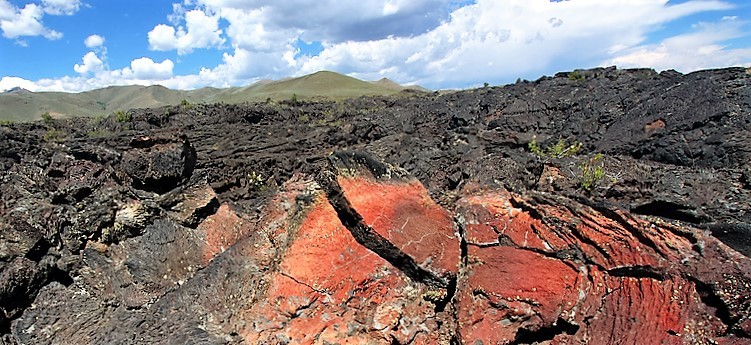
The Craters of the Moon landscape formed during eight major eruptive periods ending about 1500 years ago. Lava frequently erupted from the Great Rift, a series of deep fissures that begin near the visitor center and continue for 52 miles (84 km) to the southeast. The lava field covers about 600 square miles (1,600 square km) and is the largest Holocene-aged basaltic lava field in the contiguous United States. Sixty distinct lava flows can be found in the area ranging in age from 2,000 to 15,000 years old.
The region has experienced extensive stretching of the earth’s surface over the years. A recent example is: the 1983 Mount Borah earthquake, which increased the height of the mountain by about a foot (0.3 m). The highest point in Idaho became higher! This magnitude 6.9 earthquake also caused the Lost River Valley to drop about 8 feet (2.4 m). The tension forces of these earth movements trigger volcanic activity in the area. Stretching of the earth’s crust releases pressure on the hot rocks below causing them to melt. Magma then travels to the surface in pahoehoe flows (oozing) creating the uneven rocky surface covering much of the park.
Declared a national park on May 2, 1924, by U.S. President Coolidge, the park has expanded in size with additions over time. The original park was just over 53,000 acres (21,448 hectares); however today it includes almost 700,000 acres (283,280 hectares) including the Great Rift zone and the three lava fields.
The Loop Drive
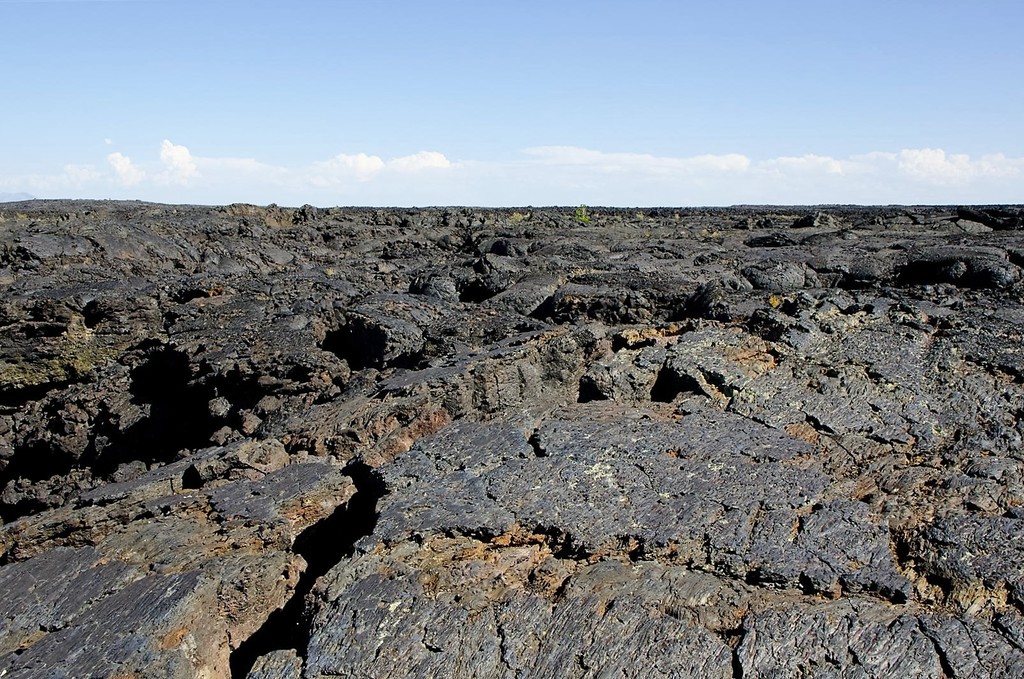
If you only have a short amount of time to visit the park, the 7 mile (11.2 km) Loop Drive takes 30 minutes to one hour and provides a scenic glimpse of the park and its expansive landscape. This is the only road through the park. A visitors center located near the entrance of the park, provides valuable information as well as education about the area.
However, the best way to experience Craters of the Moon National Park is on foot by parking in one of several designated areas.
The best exploration is on foot: hiking and camping
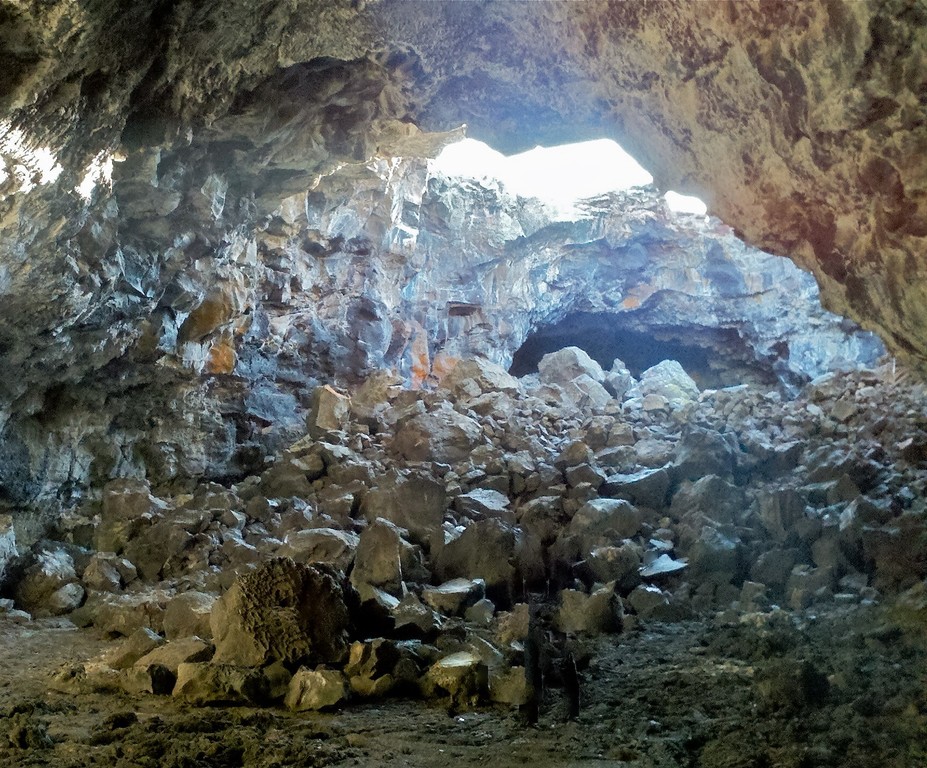
Numerous trails lead to caves and craters scattered throughout the park. The North Crater Flow, Spatter Cones, and Devil’s Orchard trails are each about one hour in duration. A paved trail less than ¼ mile (400 m) long crosses the North Crater Lava Flow. The lava in this area is named for the purplish-blue tint created by the tiny pieces of obsidian or volcanic glass embedded in the surface.
From this trail, you can access a 1.8-mile-long trail (2.9 km) through the crater and to the Big Craters/Spatter Cones parking area.
Hiking to Big Craters (from the Spatter Cones parking area) will take about two hours. If you want to explore the Indian Tunnel, you will need to obtain a free cave permit from the visitor center first.
Another great cave to explore (also requires a permit) is to hike the Broken Top Loop or Tree Molds trail and explore Buffalo Cave. You will want to allow at least 4 – 6 hours for this hiking trip.
Tree Molds is an area within the Craters of the Moon Wilderness where lava flows overran part of a forest. The trees were incinerated but as some of them burned, they released enough water to cool the lava, forming a cast. The actual Tree Molds area is a mile (1.6 km) from the Tree Molds parking lot. It is a moderately difficult wilderness trail.
Cave Area is the final stop on Loop Drive. Here, visitors will find a collection of lava tube caves. Formed from the Blue Dragon Flow, the caves are a half-mile (800 m) from the parking lot and include Dewdrop Cave, Boy Scout Cave, Beauty Cave, and Indian Tunnel. The caves are open to visitors but flashlights are needed except in Indian Tunnel. Head protection is highly recommended when exploring any of the caves. Entering the caves requires a free permit.
The Lava Trees and Echo Crater areas of the park are considered “wilderness” areas. Exploration of these areas requires a permit as well as at least one full day. These trails are rugged and not for the fair-weathered hiker. Be prepared for emergencies if you hike these areas as emergency services are quite a distance away; you also may not have cell service in these areas.
Backcountry hiking is permitted in wilderness and backcountry areas (added in 2000). Only two trails enter the wilderness areas but stop after only a few miles. From that point, hikers generally follow the Great Rift.
All overnight backcountry hikes require free registration with a ranger. There is no drinking water in the backcountry and the dry climate can quickly dehydrate hikers. Pets, campfires, and all mechanized vehicles (including bicycles) are not allowed in the wilderness area. Camping in this area will be primitive camping as well as carry in/carry-out.
The only improved campground has 51 sites — none of which can be reserved in advance. The facilities are basic but do include water, restrooms, charcoal grills, and trash containers.
Cross-country skiing is allowed on the Loop Drive after it is closed to traffic in late November because of snow. Be aware that sharp lava and hidden holes may create a hazard, especially if you wander off the road. Blizzard-like conditions are also common, so be prepared.
Native American story
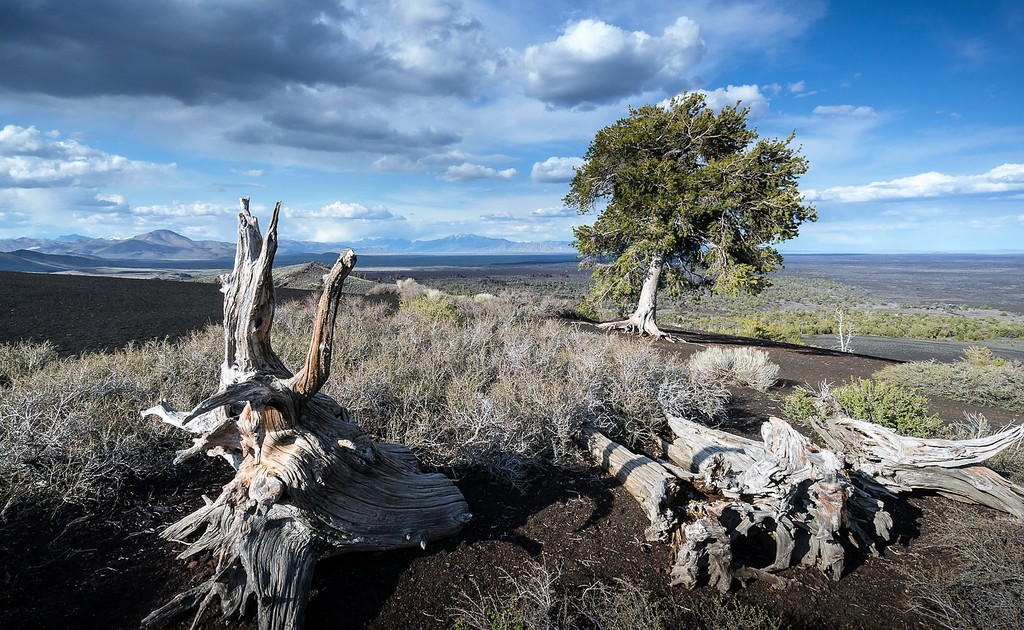
Northern Shoshone created trails through the Craters of the Moon Lava Field during their summer migrations from the Snake River to the Camas Prairie. Stone windbreaks at Indian Tunnel were used to protect campsites from the dry summer wind. Shoshone legend speaks of a serpent on a mountain who, angered by lightning, coiled around and squeezed the mountain until liquid rock flowed, fire shot from cracks, and the mountain exploded.
Yes, animals and plants do thrive here
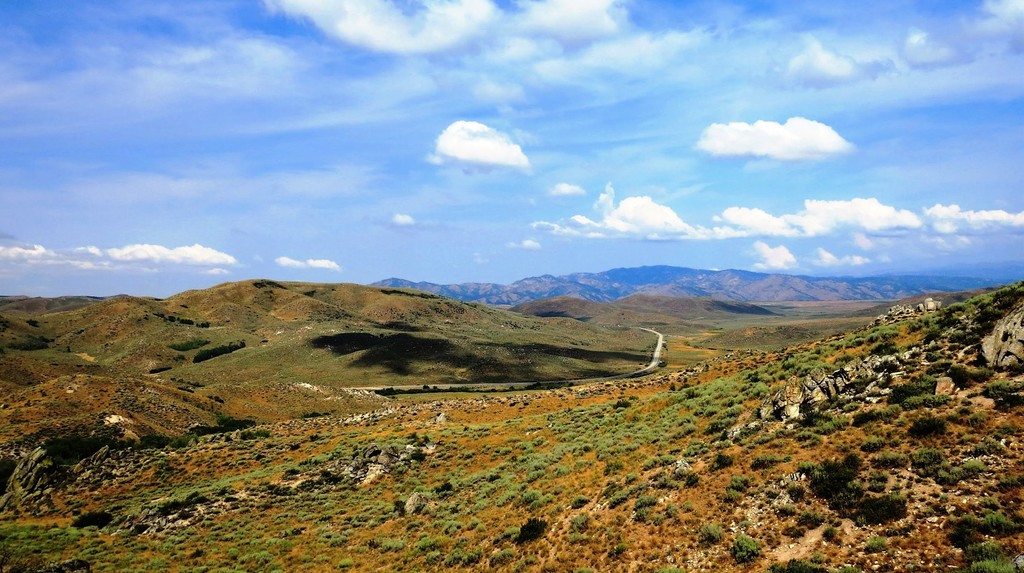
Despite the terrain and uninhabitable appearance of Craters of the Moon, many animals live in the park. The most observed and frequent are birds (hawks and eagles) and some rodents (squirrel, marmots, lizards, and snakes). Most desert animals are nocturnal. These include woodrats (packrats), skunks, foxes, bobcats, mountain lions, bats, nighthawks, and owls.
There are very few sources of water at Craters of the Moon. Birds and animals must get the water they need directly from their food. Mule deer munch bitterbrush leaves. Birds snatch insects from the air. Rattlesnakes swallow rodents whole.
There are over 300 species of plants known to grow in the park. When wildflowers are not in bloom, most of the vegetation is found in semi-hidden pockets where roots can find moisture. These primarily consist of pine trees, cedars, junipers, and sagebrush.
A plant commonly seen on the lava field is the dwarf buckwheat, a flowering plant 4 inches (100 mm) tall with a root system up to 3 feet (0.91 m) wide. The root system monopolizes soil moisture in its immediate area, creating what appears to be deliberately placed plants.
Be prepared!

Be prepared when you go to Craters of the Moon National Park. Bring your sunscreen (in winter and summer) as the sun can be intense year round. A wide-brimmed hat is useful for blocking the sun glare from your eyes.
Sturdy shoes are mandatory if you are going to explore the terrain on foot, as much of the area is very uneven and rough.
If you plan to explore the caves, bring a flashlight to navigate them safely. Head protection is also highly recommended in the caves.
A different side of adventure
Spending a week here exploring is an adventure for those who are prepared to rough it a little. Camping in the backcountry permits amazing star gazing while listening to the sounds of life surround you. Nighttime is an active time within the park as the temperatures drop. Hiking through the wilderness areas brings amazing sights and an appreciation for the vast beauty and unique experience in this national park.
History
Get Trip101 in your inbox
Unsubscribe in one click. See our Privacy Policy for more information on how we use your data


















Create an account to